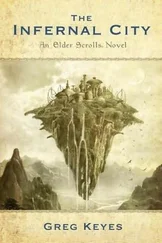“So what do you think, Alan? Our man might have once been a med student? Might have even worked for one of those companies?”
“Maybe,” said Unit Chief Gates. “But unfortunately, Bill, the information about the Plastination process is readily available on the Internet. Anyone with a basic knowledge of chemistry and the desire-as well as the time and means to fulfill that desire-could, with a little trial and error, figure out the process himself.”
“That’s right,” said Dr. Morris. “It appears the killer preserved his victims by first removing their internal organs and then embalming them with a formaldehyde solution. Then the body was placed in a bath of acetone, which-under freezing conditions-would draw out the water and replace itself in the cells. Next would come the bath of the liquid polymer, in this case silicone rubber. By creating a vacuum, the acetone will boil and vaporize at a very low temperature, drawing the liquid polymer into the cells behind it. While the bodies were still supple, the killer then stuffed the cavities, stretched the bodies into the desired position on the metal frame-probably using wires to help him pose his figures-and left them to dry. Keep in mind, Bill, that the plastic must be cured, and most likely the killer hardened it using heat or ultraviolet light.”
“Jesus Christ,” said Burrell.
“Yes,” said Gates. “Our boy has quite an operation going. He has a large space-a studio, if you will-in which to work. Must also have quite a lot of money socked away. I suppose some of the equipment such as the ultraviolet lamps and the vacuum sealed tub needed for the acetone and polymer baths could be jury-rigged, but the amount of time for experimentation, as well as the time it would take to preserve each body, even under ideal conditions, is staggering-estimated anywhere from eight to twelve hundred man hours.”
“So we’re looking at a guy who has a lot of time on his hands? A guy who is perhaps independently wealthy?”
“Probably,” said Gates. “If you take into account the timeline between Campbell ’s disappearance and the appearance of the bodies down at Watch Hill, you’re looking at a total of just over three months. Even with all that time off, needless to say, our boy hasn’t been getting much sleep lately.”
The room was silent.
“Sales or thefts of large quantities of acetone,” said Gates, “as well as the silicone rubber needed for the Plastination process will be a good place for our teams here to begin. We’ll take care of tracking things down on that end.”
Burrell nodded.
“Next,” Dr. Morris began again, “the Paints and Polymers subunit found a match in our database for the chemical compound of the paint used on the figures of Campbell and Wenick-a mixture of Starfire brand acrylic enamel auto paints, including a primer and a clear coat. Like the epoxy, this brand of automotive paint can be found at many dealers throughout the country and on the Internet. The paint was clearly applied to the bodies in many layers, and by using some type of sprayer. However, mixed into the paint was a white powder that the General Chemistry subunit identified as ground marble.”
“Marble?” asked Burrell. “You mean like the kind of marble used in statues?”
“Yes, that’s exactly what I mean, Bill. Nonfoliated, calcite-based metamorphic rock with the molecular makeup, color, and density identical to what our databases identified as unique to and originating from a specific quarry in Italy.”
“ Carrara,” said Cathy absently, impulsively.
“That’s right, Dr. Hildebrant,” said Gilbert Morris. “The ground marble found in the paint was undoubtedly quarried from Carrara, Italy.”
“How did you know it was Carrara, Cathy?” asked Burrell.
“Well,” she began, “ Carrara is a small town in Italy about sixty miles north of Florence. The marble quarried there has been a favorite of sculptors dating back to Ancient Rome, and many of the city’s greatest monuments were carved from it-as were countless sculptures during the Renaissance. Even more so than his own quarries in Pietrasanta, Michelangelo prized Carrara marble above all other types of stone because of its beauty and consistency. Indeed, it was from blocks of Carrara marble that Michelangelo carved his most famous masterpieces.”
“And they’re still quarrying marble there today?” asked Rachel Sullivan.
“Yes. As far as I know, Carrara marble is still regarded as the finest, and statues carved from it are exported all over the world. However, the marble itself is very expensive.”
“So,” said Burrell, “it appears this Michelangelo Killer went through a great deal of effort and expense not only to get Tommy Campbell for his Bacchus , but also in acquiring the marble powder from Carrara. This might be our best lead so far. Sullivan, you’ll assign someone to start looking into the import records for all the Carrara marble coming into Rhode Island? See if you can track down sales records for vendors who deal specifically with Carrara marble statues?”
“Will do.”
“You should probably look into any reports of statue or marble thefts in the area over the last six years, too. Maybe our man got his marble that way-stole a statue or something and ground it up himself.”
“Right.”
As Dr. Morris went on to give the report from the Metallurgy subunit on the sculpture’s frame, Cathy glanced uneasily over to Sam Markham. Among his paperwork from the Providence office, Markham had also brought with him his copy of Slumbering in the Stone . Cathy could not see to which page he had turned, but she knew exactly what he was looking for. And as if reading her mind, Markham looked up from his book to meet its author’s gaze.
“I think Dr. Hildebrant would like to say something,” he said. “Go ahead, Cathy. It’s about Michelangelo’s Bacchus, isn’t it?”
“Yes,” Cathy said-the room at once was silent. “Although Michelangelo carved his most famous sculptures from blocks of Carrara marble, for his Bacchus he used a flawed block of Roman marble. That is, marble that was not quarried from Carrara.”
“So?” asked Burrell. Cathy looked to Markham, who-nodding understandingly-smiled back at her with his eyes.
“Go ahead, Cathy.”
“Well,” she said, “given what we know about The Michelangelo Killer thus far-about his obsession with detail, about his desire to embody his Bacchus in the historical milieu of the original-it seems strange to me that he would knowingly and erroneously use Carrara marble powder for his statue when other types of flawed, low-grade marble of the Roman variety would be readily available to him for much cheaper.”
“I don’t follow,” said Burrell. “And what’s the difference really? The guy is obviously so obsessed with being like Michelangelo that he wanted to use the Carrara marble powder simply because it was Michelangelo’s favorite. Maybe he wanted to improve upon the original-make his Bacchus from better stuff than Michelangelo’s.”
“What Dr. Hildebrant is saying,” said Markham, “is that The Michelangelo Killer wouldn’t do that.”
“Why?”
“Because, from what we can tell about this guy, if he had originally planned on acquiring marble powder for his Bacchus , he would not have settled for anything other than a type of marble powder more in line with that of Michelangelo’s original. Thus, Dr. Hildebrant is telling you that The Michelangelo Killer used the Carrara marble most likely because he already had it-most likely because he had originally planned on using it for something else. Something more appropriate.”
“What?” asked Bill Burrell.
As Sam Markham held up his copy of Slumbering in the Stone , Cathy and the rest of the room saw the page to which he had turned.
Читать дальше












